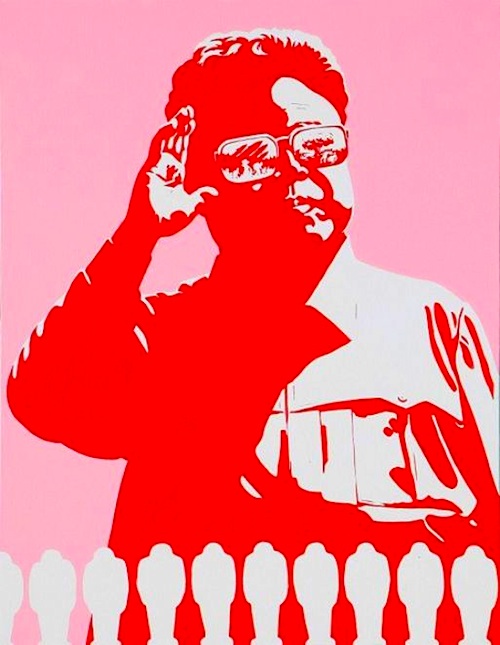 By Joe Bendel. In the post-Warhol era, Sun Mu is one of the few (perhaps only) artists who shuns the media as well as the trappings of fame. He has good reason. As a defector from North Korea, he must be secretive, for reasons of survival. Even his professional name is a pseudonym, meaning “no boundaries.” Despite the differences in their circumstances and styles, it is not impossible to compare him to Ai Weiwei. It was therefore quite a surprise when he was invited to mount a solo show in China. Adam Sjöberg chronicles the artist’s eventful visit while scrupulously protecting his identity in I A Sun Mu, which screens during this year’s DOC NYC.
By Joe Bendel. In the post-Warhol era, Sun Mu is one of the few (perhaps only) artists who shuns the media as well as the trappings of fame. He has good reason. As a defector from North Korea, he must be secretive, for reasons of survival. Even his professional name is a pseudonym, meaning “no boundaries.” Despite the differences in their circumstances and styles, it is not impossible to compare him to Ai Weiwei. It was therefore quite a surprise when he was invited to mount a solo show in China. Adam Sjöberg chronicles the artist’s eventful visit while scrupulously protecting his identity in I A Sun Mu, which screens during this year’s DOC NYC.
You might think you know exactly where this story is headed and you will be correct, except there is way, way more to it. Not surprisingly, Sun Mu’s work is controversial in South Korea (he bristles at the term “pop art,” but it is handy shorthand in this context). Through a strange chain of events, Sun Mu befriended Chinese-Korean artist Cui Xiangi, who introduced him to Liang Ke-gang, the curator of the Yuan Museum of Art in Beijing. Being extraordinarily brave and maybe a bit naïve, Liang proposed a one-man exhibition to Sun Mu. Although mindful of the considerable risks, the prestige involved was too significant to turn down.
Thanks to Liang’s hospitality, the early days in China were quite pleasant for Sun Mu, his South Korean wife, and their young daughters. However, as the opening day approaches, tension rises. In addition to the usual last minute crunch, Sun Mu and Liang worry the Chinese government will disrupt their plans at the request of their North Korean allies. Had the Party allowed the show to proceed, their critics would have had to give them credit and eat crow. Unfortunately, that plate of crow will have to wait for another day. If anything, the Chinese authorities and North Korean enforcers exceed our expectations, in the worst way possible.
Like a quarterback facing a ferocious pass rush, Sjöberg stays in the pocket, capturing the ugliness of censorship and thuggery as it unfolds. That alone gives the film scalding power. However, Sjöberg also fully explores the implications of Sun Mu’s life and art. In many ways, he is one of the luckier defectors, who has been able to de-program his “brainwashing,” start a loving family, and build an impressive career. His stories of life in the DPRK are absolutely harrowing, but his exile also comes with deep sadness. Yet, he has no nostalgia for the Kim Dynasty, whom he explicitly blames for the North Koreans’ suffering.

Throughout the film, Sjöberg films Sun Mu from behind or obscured by shadows, which might sound distractingly awkward, but actually gives the film a distinctively noir vibe. He truly immerses viewers in Sun Mu’s work, which Ryan Wehner literally brings to life through elegant animated sequences. As a result, even though we never see Sun Mu directly, the audience will feel they intimately understand the artist.
Among documentaries, I Am Sun Mu is a rare breed apart that manages to be visually stylish and gutsy as all get-out. Frankly, the last half hour is like one cold bucket of water to the face after another. Yet, it is ultimately a deeply humanist cinematic experience. Easily ranking as the best of this year’s DOC NYC and one of the best films currently on the festival circuit, I Am Sun Mu screens in New York this Sunday (11/15) at the Bow Tie Chelsea and Tuesday (11/17) at the IFC Center, as well as next Friday (11/20) and the following Saturday (11/21) as part of the 2015 Hawaii International Film Festival.
LFM GRADE: A+
Posted on November 13th, 2015 at 12:41pm.






